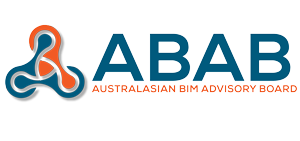ABAB explores the integration of Digital Engineering, Asset Management and Sustainability for the Future BIM
The Australasian BIM Advisory Board (ABAB) convened on 7 June 2024 at the NATSPEC Office on Gadigal land, and virtually across Australian jurisdictions and New Zealand for its second meeting of 2024.
The board, comprising representatives from various organisations and public sector agencies, shared updates on latest developments, publications and initiatives undertaken since the March meeting including the Queensland Department of Transport and Main Roads updated BIM Guideline and Information Delivery Specification from buildingSMART International.
Established earlier this year, the ABAB Terminology Working Group provided updates on its direction, and the development of a terminology matrix which seeks to map the variety of definitions and sources that exist across various jurisdictions across Australia and New Zealand in the digital built environment. Chair Andrew Curthoys announced, “We are excited to make ABAB-endorsed Standards and Guides available on our website, reinforcing our commitment to driving consistent BIM requirements in government projects.“
The forum welcomed guests from the Sustainable Built Environment National Research Centre, (SBEnrc) Asset Management Council and Facility Management Association of Australia to discuss the shared challenges in managing asset information across the project lifecycle. These conversations emphasised the value of data and the importance of cultural change in driving developments for the digital built environment. “It’s imperative that we embrace the challenges and opportunities of digital transformation to enhance the sustainability and efficiency of our built environments,” noted Andrew Curthoys.
The convergence of sustainability and digital engineering (DE) was another focal point, with Transport for NSW presenting on leveraging BIM for Net Zero strategies. The discussion emphasised that with the right digital tools, quantifying carbon emissions can become a straightforward process, the transition to these new technologies will require time and concerted effort, so the critical role of collaboration and knowledge sharing in driving consistency. Environmental sustainability and the carbon agenda not only propels digital transformation but also serves as a lever for improving data quality and value. “Environmental sustainability and the path to net zero serve as the ‘Trojan Horse’ for enhancing our data practices and digital capabilities,” Andrew Curthoys said.
Afternoon sessions kicked off with Patrick Bossert’s presentation on the future of value of BIM, drawing on international examples, demonstrating what more we can achieve with contracting, data and digital opportunities. The SBEnrc presented their MetaBIM tool, an innovative open-source BIM platform designed for carbon accounting. This platform represents the culmination of SBEnrc’s dedicated research, and ABAB was fortunate to get a preview and visualise the substantial value of their work.
Updates from key stakeholders were provided, Women in BIM showcased their latest initiatives, events and mentorships, to support, empower and celebrate female BIM and digital construction professionals. Standards Australia also shared crucial updates on their BIM Working Group’s efforts, detailing their alignment with UK standards and upcoming work programs, projects, and publications.
The diverse discussions and presentations not only reflected the board’s ongoing commitment to enhancing digital engineering and sustainability but also highlighted the collaborative spirit necessary to navigate the complexities of modern infrastructure projects. The emphasis on leveraging BIM to achieve Net Zero strategies and the integration of groundbreaking tools like the MetaBIM platform underline ABAB’s role in assisting government and industry towards a more sustainable, efficient, and digitally enabled architecture and construction industry. With the board’s proactive approach in aligning standards and fostering gender diversity, ABAB continues to pave the way for transformative change, ensuring that the digital built environment not only meets, but exceeds expectations.
The Australasian BIM Advisory Board established by the Australasian Procurement and Construction Council (APCC) and the Australian Construction Industry Forum (ACIF), together with the key standard-setting bodies, NATSPEC, buildingSMART and Standards Australia, promotes best practice and consistent approaches to BIM practices, standards, and requirements. ABAB guidance materials are available at: Australasian BIM Advisory Board (abab.net.au).



0 Comments Leave a comment